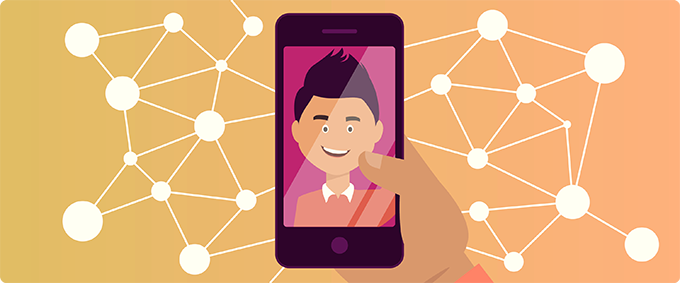
Often the digital life of boys and girls begins before they start using the internet, even before they are born, with the dissemination of ultrasound images, an increasingly common family practice during pregnancy. Mother. The practice of fathers and mothers posting texts, images or videos of their sons and daughters on social networks is called sharenting . An anglicism that comes from the combination of the terms share (sharing) and parenting (parenting).
This publication can be consensual or informed. Parents ask their children if they are happy to post something about them or inform them about the publication, or it may be done without the child knowing what is to be shared or has already been shared. In fact, the lack of consensus between the two parties, especially in the case of adolescents, has been identified in recent research as a cause of discomfort in their relationships.
That fathers and mothers share photos of their children online with family and friends can be understood as natural behavior, especially if they are proud or happy about the things they do in their family life. However, the more information is shared online, the greater the child’s exposure to risks such as data theft, school or cyber bullying, identity theft, or negative consequences in their future personal or professional life.
Information published on the internet is irrecoverable
Furthermore, once the information is published online it is irrecoverable: the so-called “fingerprint”. We must remember that minors have the right to their own personal information and their own image, and that there may be a conflict between the minor’s best interests, the protection of their privacy and the wishes and actions of their parents.
With sharenting there is another added problem. Images taken in an innocent way in an open context (be it the case of a girl or a boy bathing naked in a bathtub) can be used in a tortuous way in a context of child pornography or another. A study carried out by the Australian government commission eSafety found that 50% of the images shared by pedophile websites had been taken from social networks.
In some cases, parents not only share information, but become bloggers. In the UK, the Mumsnet Blogging Network is a very active online community for mothers and fathers, with several thousand blogs and over ten million unique monthly visitors.
The parents-bloggers are recorded to promote their publications and find opportunities to “work with brands , ” what is called monetizing a blog, something that makes about two – thirds of the parents-bloggers . Meanwhile, other blogging mothers do not seek a commercial purpose.
17% share information without authorization from their children
For fathers and mothers of young children, social media offers a space to share advice on different issues. More than half of mothers (56%) and a third of fathers (34%) discuss issues of child health and parenting, they also share advice on bedtime (28%), food (26%), norms to be met (19%), daycare / preschool (17%) or behavior problems (13%).
The results of our research confirm that, according to the minors, 17% of Spanish mothers and fathers, probably unaware of this, have shared information about minors on the internet without their authorization. Faced with this behavior, the majority of minors (12%) ask their father / mother / caregiver to remove the information published online.
Some basic tips
Keith & Steinberg (2017) and Ouvrein & Verswijvel (2019) give a series of recommendations for parents to properly share information online, of which we have made a synthesis that may be useful. Parents should restrict this habit to special occasions, since sharing daily activities is uninteresting.
They should also be familiar with the privacy policies of the websites on which they upload information. They should set up notifications to alert when the child’s name appears in search engines (for example, Google alerts).
Those who share information about their children’s health problems and / or clinical situation should do so anonymously. Caution should be exercised when sharing information that is too personal (for example, addresses), the child’s actual location or their full name. Photos that show the child in any nudity situation, which may be embarrassing or provoke negative comments, should not be published. Finally, the effect that the shared information has on the present and the future of the child must be kept in mind and, in case of doubt, discuss it with the children and respect their opinions.
Author Bios: Carmelo Garitaonandia is Professor Emeritus and Maialen Garmendia Larrañaga is Associate Professor of Sociology, Department of Sociology and Social Work both at the University of the Basque Country / Euskal Herriko Unibertsitatea